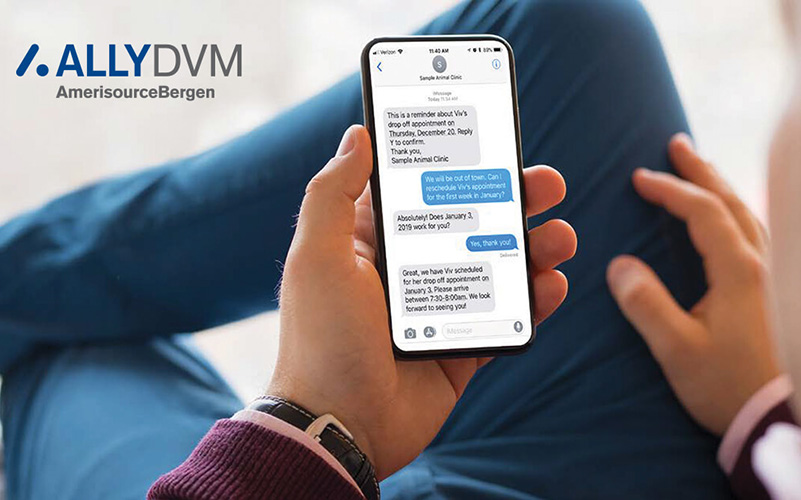Darwin obviously wasn’t referencing two-way texting when he concluded that adaptation ensures survival. Yet his words reflect how some veterinary practices have embraced and adapted two-way text messaging into “new normal” operations to help curbside appointments run quicker and smoother and improve the customer experience while maintaining physical distance. And for practices that have not adopted two-way texting into curbside operations, veterinarians and leading animal health organizations are certainly recommending texting.
For example, in a March 2020 article in Today’s Veterinary Business about the needs that veterinarians are seeing and how they’re responding, North Carolina veterinarian and Today’s Veterinary Business Editorial Advisor Ernie Ward was quoted saying how texting and direct messaging can serve “as a lifeline between your veterinary practice and clients. Text can be especially helpful in coordinating curbside veterinary care, pet drop-offs, or pickups of medications and food.”
Similarly in a recent article called “Best Practices for Veterinary Curbside Check-ins to Stem Coronavirus” (published in Today’s Veterinary Practice), NAVC Editorial Director Patricia Wuest recommended text messaging so practice teams can know when a client has arrived in the parking lot and discuss any issues a pet may be having, all of which helps save time while protecting veterinary teams.
While there was obviously no need for curbside service prior to COVID-19, leading animal health journals were nonetheless trying to show veterinarians before the crisis how text messaging supported better animal health by reaching pet owners on channels they preferred.
In 2019, for example, Frontiers in Veterinary Science published results from a survey showing that 38.1% of pet owners ranked text messages as their first choice of communication if they had a pet requiring a hospital stay. Despite this, the survey found that “few pet owners receive medical updates or appointment confirmations via text when a significant portion would prefer this mode of communication.”
The findings echoed what the AVMA and AAHA had written a year earlier in their booklet The Real-Life Rewards of Virtual Care: “Texting is especially popular. Millennial pet owners in particular like to text information back and forth to their doctors.”
Prior to COVID-19, veterinary medical organizations were also recommending text messaging to help practices improve compliance.
In March of 2016, for example, the monthly medical journal JAMA Internal Medicine published a meta-analysis of randomized clinical trials to assess the effect of text messaging on medication adherence in adults with chronic disease, and discovered that “mobile phone text messaging approximately doubles the odds of medication adherence.”
Citing the study, a January 2017 article published in Veterinary Practice News tabled the idea that text messaging could similarly help increase compliance for veterinarians, saying, “Besides improving medication compliance, texting your veterinary clients could bring business efficiencies, from confirming appointments to alerting pet owners when their pets have recovered from surgery.”
As slow as some practices were to adopt text messaging before COVID-19 (much like the slow adoption of veterinary telehealth), a May 15th, 2020 survey published by the AVMA unsurprisingly found “most practices are increasing text messages with clients and are communicating electronically with clients to follow up on ill patients.” And at curbside, veterinary practices are adopting simple two-way texting to streamline efficiency and save time.
If two-way texting assistance sounds right for you during these difficult days, we’ll keep this short and sweet because you may be swamped, short-handed, and run off your feet.
Is the ALLYDVM communication and retention system right for you? We can help you figure that out.
Book your free ALLYDVM consultation today
Schedule a chat with us at whatever time works best for you.
We promise it won’t take up much of your time.






